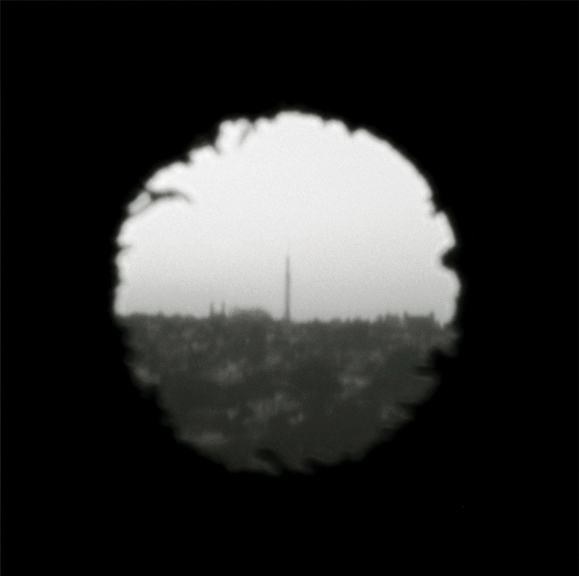

















Museum of Labour, Porto Alegre, Brazil, 2013
From September 11 to October 27, 2013
Held at the Museu do Trabalho (Museum of Labour) in Rio Grande do Sul, this exhibition brings together a group of works that have the purpose of building real and fictional trips between the past and the future. In confrontation with the existing objects and machines of the museum, it was presented a set of photographs, films and cameras produced and used by the artist in previous projects.presented a set of photographs, films and cameras produced and used by the artist in previous projects.
The Invention of Invention
What is the future of machines? What about their present? Machines, one can say, are
good for speed acceleration, making space smaller, capturing images, and for many
other things as essential as trivial, like copying a key in the corner locksmith. The more
useful these objects are, the more invisible. They are brought to the world of visible – and
useless – things only when overtaken by more efficient machines, becoming mementos
of a technologically obsolete era. This idea made me reflect on the place of the machines
Letícia Ramos developed in recent years, now exhibited alongside with photographs
and drawings. (And not by chance, at the Museu do Trabalho [Labor Museum,] where
contemporary art shows share space with a collection of machines that took part in the
industrialization of the State of Rio Grande do Sul.)
Paradoxically, the machines built by the artist are already born in the future of
machines, defined as the moment they are perceived as parts of the history of a given
workmanship. Naturally, they were built within the context of art, thus were born for the
museum, for being seen. The obsolescence of these objects is not caused, therefore, by
their technological overcoming; they cannot be surpassed as they are not intended to
overcome anything. Besides, at a glance they look completely unnecessary – as if Letícia
was reinventing the wheel –, as photographic and film equipment with the most elaborated
capabilities already exist.
Therefore, these machines can be perceived as being here, in our world, because
they are deeply linked to pleasure, and just fairly related to usefulness . They are born to
a specific image with plenty of mental constructions and conjectures about the unknown.
Literature, science fiction, Franklin’s lab (from the Monica’s Gang comic books) arise as
references to places where inventing the wheel is as primordial as the wheel itself. For not
even pleasure is better than the pleasure of pleasure seeking.
ERBF, POLAR, and ESCAFANDRO, the cameras shown in this exhibition, were
designed in the 2007-12 period, each made for a specific image. These objects were built
from other objects; a 35 mm movie camera, Polaroid cameras, and underwater cameras
were simultaneously the starting-point of these machines. Leticia’s cameras, as well as
her photographs and films shown here, are dominated by a nostalgic atmosphere, and
tell us about a bygone, analogic era when everyone had to travel by land or water. A time
when capturing an image was an experience almost as extraordinary as reaching another
place.
But nostalgia is not the same as sentimental conservativeness. Hence, in these
works there is not any trickish grievance of progress and its astounding velocities. The
delight of inventors and explorers – past and present – is what really springs from them. At
their workshops, laboratories or computers, these curious and pertinacious people have
a twinkle in their eyes that convinces us their gadgets are going to work. But they are not
seriously concerned about it, once pursuing is maybe more important than finding.
Besides these objects, the exhibition also displays the project of a film projector
specially developed for a machine in the museum’s collection. This drawing was developed
from a 35 mm-film drying cabinet (from the Museu do Trabalho collection), and takes us a
bit closer to the artist’s creation process. We can see through it that another machine, born
from the contact with this object, explores the limitations and idiosyncrasies of the original
model in order to recover a sense of usefulness, however briefly. Not a movie industry
utility, but for the magic, unique delight of moving images.
In other words, Letícia starts from objects, or from the imagination of certain
points of view – as in the ESCAFANDRO camera – to design cameras, and thus inverts
the traditional principle of the history of images, according to which movie or photographic
cameras generate visual stories. Taking sides with this overturning, this inverted logic,
favors the construction of a kind of science fiction of the past. So the notions we have
about “new” or “obsolete” are not precise anymore, and need to be reexamined.
The photographs, drawings, and objects by Letícia Ramos invite us to a trip to
the artist’s universe – a universe combining unknown future and past times, dwelled by
phantasies and a concrete element: the construction of machines for image capturing.
In a way, Letícia’s creative compass condenses these two poles which formerly used to
compose a dichotomy: imagination and knowledge.
Gabriela Motta
September, 2013
According to Freud in Civilization and Its Discontents, usefulness and pleasure seeking are the “motive forces of
all human activities” (p. 39.)
